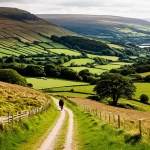Essential ways to explore the UK’s wildlife and nature reserves
Discovering UK wildlife starts with choosing well-maintained UK nature reserves known for rich biodiversity. These reserves offer diverse habitats where visitors can experience native species firsthand. Wildlife tourism thrives here by providing guided walks, birdwatching hides, and interactive visitor centres that deepen understanding of the natural environment.
Planning is crucial for a rewarding experience. Use official resources such as government websites and local conservation groups to find up-to-date information on access rules, seasonal wildlife activity, and any restrictions. Responsible tourism ensures these natural habitats stay protected for future generations to enjoy. Bringing essentials like binoculars, field guides, and appropriate clothing enhances the quality of your nature experiences.
Also read : How Can You Experience Local Culture on a UK Tour?
For first-time visitors, a quick itinerary might include well-known sites like the Scottish Cairngorms, Norfolk Broads, and the Lake District. Mapping these locations creates a manageable route rich in wildlife encounters. Combining visits to multiple UK nature reserves in one trip maximises your chances to discover UK wildlife in different ecosystems, from wetlands to woodlands. This approach balances adventure with education, fulfilling the true spirit of wildlife tourism.
Notable UK nature reserves and top wildlife habitats
Discovering the best UK nature reserves means exploring a variety of unique habitats that span heathlands, wetlands, woodlands, mountains, and coastlines. Each reserve offers distinct opportunities to experience the country’s rich biodiversity and vibrant wildlife. The UK’s wildlife hotspots attract visitors eager to observe native species in their natural environments, making these places ideal for both tourists and nature enthusiasts.
Also read : What Unique Culinary Experiences Await Tourists in the UK?
For example, wetlands provide crucial habitats for waterfowl and amphibians, while woodlands shelter a diverse range of birds and mammals. Coastal reserves, by contrast, offer stunning views paired with the chance to see marine birds and seals. These varied environments ensure something for everyone, whether you prefer quiet woodland walks or rugged mountain trails.
Many of the best UK nature reserves are well-equipped for families and beginners, with clear pathways, informative signs, and visitor centers that engage all ages. These reserves for tourists focus on accessibility and education, making wildlife observation enjoyable and educational. By choosing a reserve that matches your interests, you benefit from a rewarding nature experience while supporting conservation efforts protecting the UK’s remarkable wildlife hotspots.
Wildlife-watching activities and seasonal highlights
Discover the best times and ways to enjoy UK wildlife
The UK offers a rich variety of wildlife-watching UK opportunities that appeal to both casual observers and dedicated naturalists. Popular activities include birdwatching, guided walking tours, and photography safaris that capture the country’s diverse fauna in natural habitats. Enthusiasts can join UK wildlife tours led by local experts, ensuring immersive and informative experiences.
Timing is key when planning wildlife excursions. The best time for wildlife UK often centers around seasonal highlights such as spring breeding seasons and autumn migrations. For example, the arrival of seabirds along coastlines can be an unforgettable sight, while the breeding season offers unique glimpses of elusive species in woodland areas. Rare sightings increase during migration periods, making autumn and spring excellent for spotting unusual visitors.
To maximize enjoyment, many recommend guided tours. These UK wildlife tours connect travelers with knowledgeable guides who provide valuable insights and access to hidden spots. Whether it’s a safari focusing on red deer or a birdwatching walk during dawn chorus, guided experiences elevate wildlife-watching in the UK to a rewarding adventure.
Regional highlights and themed itineraries
Explore UK wildlife regions renowned for their distinctive fauna and flora. The Scottish Highlands offer rugged landscapes ideal for spotting red deer, golden eagles, and native wildcats. In contrast, Welsh National Parks like Snowdonia and Brecon Beacons provide lush habitats supporting otters and rare bird species. Coastal reserves, such as those along the Norfolk coast, boast thriving seabird colonies and diverse marine life.
For those seeking tailored nature tours UK, itineraries vary by interest and duration. A two-day wildlife itinerary might include guided walks through the Lake District to observe native butterflies and wildflowers, followed by evening sessions tracking bats. Longer trips can combine visits to the Scottish Highlands for rare mammals with marine life tours along Cornwall’s coast, offering a broad spectrum of ecosystems.
Wildlife itineraries themed around specific interests enrich the experience. Fantasize about a marine life adventure focusing on seals and dolphins or a butterfly and wildflower tour during spring. Each itinerary emphasizes sustainability and maximizes wildlife encounters through expert guides familiar with local habitats, making these journeys informative and immersive.
Accessibility, ethical travel, and practical tips
Exploring nature responsibly and inclusively
For those seeking accessible nature reserves UK offer several options designed with inclusivity in mind. Many reserves provide wheelchair-friendly paths, sensory guides, and family-friendly facilities ensuring everyone can enjoy the outdoors. Selecting reserves that advertise accessibility features helps visitors plan confidently and avoid unexpected obstacles.
When it comes to ethical wildlife tourism, visitors must prioritize respect for animals and habitats. Essential guidelines include observing wildlife from a distance to avoid disturbance, following marked trails to prevent erosion, and adhering to “leave no trace” principles by carrying out all waste. Responsible photography is also crucial; using zoom lenses minimizes intrusion, and avoiding flash protects sensitive species.
To enhance the visit, using official resources such as reserve websites, dedicated apps, and planning tools is highly recommended. These resources offer up-to-date accessibility information, trail maps, and alerts about sensitive areas. Planning with these tools reduces impact on wildlife and ensures a safe, enjoyable experience for all. Incorporating these practices supports the dual goals of conservation and inclusiveness in natural spaces.
Connecting with UK wildlife organizations and further resources
Discovering wildlife conservation UK efforts becomes rewarding when you connect with trusted organizations dedicated to protecting natural habitats. Groups like the Royal Society for the Protection of Birds and local wildlife trusts offer invaluable insight into preserving native species and promoting sustainable nature tourism links throughout the UK. These organizations frequently provide detailed maps and guides, essential tools that enhance your experience while supporting conservation goals.
For those eager to delve deeper, official wildlife resources serve as reliable platforms to expand knowledge about diverse ecosystems and ongoing charity initiatives. These resources are often updated with the latest information on species protection and responsible tourism practices. Engaging with these channels fosters a better appreciation of the UK’s natural heritage and encourages active participation in conservation activities.
To maximize your understanding, explore official websites that host interactive guides and up-to-date data on wildlife reserves and projects. This approach not only equips you with practical knowledge but also invites you to contribute meaningfully to wildlife conservation UK efforts. Such connections bridge outdoor enjoyment with environmental stewardship, affirming the shared responsibility to cherish and protect nature for future generations.

